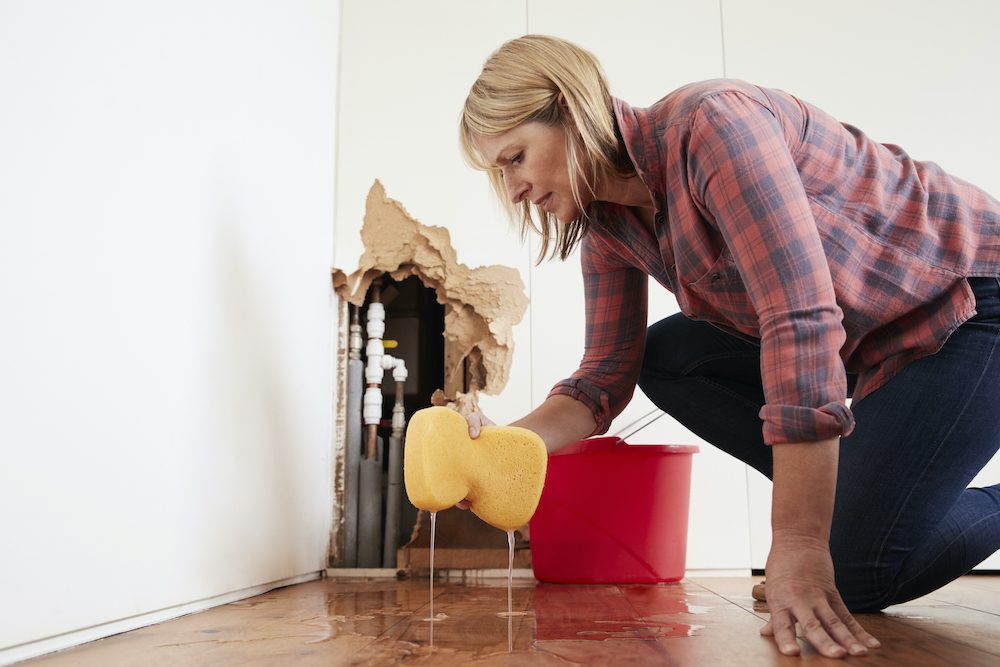6 Ways to Locate Concealed Water Leaks in Your House
6 Ways to Locate Concealed Water Leaks in Your House
Blog Article
Are you in search of guidance about Hacks to detect leaks?

Early detection of leaking water lines can minimize a prospective disaster. Some small water leaks may not be visible.
1. Check Out the Water Meter
Every house has a water meter. Inspecting it is a proven manner in which helps you uncover leakages. For starters, switch off all the water resources. Guarantee nobody will certainly purge, utilize the tap, shower, run the cleaning machine or dishwashing machine. From there, go to the meter as well as watch if it will certainly transform. Because no person is utilizing it, there ought to be no motions. That suggests a fast-moving leak if it moves. If you discover no changes, wait a hr or two and also inspect back again. This means you may have a slow leakage that might even be below ground.
2. Examine Water Consumption
If you find sudden adjustments, in spite of your consumption being the same, it suggests that you have leaks in your plumbing system. A sudden spike in your expense suggests a fast-moving leakage.
A constant boost every month, even with the very same practices, shows you have a sluggish leak that's likewise slowly escalating. Call a plumber to completely examine your property, especially if you feel a cozy area on your floor with piping below.
3. Do a Food Coloring Test
When it involves water consumption, 30% comes from commodes. Test to see if they are running appropriately. Decline specks of food shade in the tank and wait 10 mins. If the shade in some way infiltrates your bowl throughout that time without flushing, there's a leak between the tank as well as dish.
4. Asses Outside Lines
Do not neglect to examine your exterior water lines also. Must water leak out of the connection, you have a loose rubber gasket. One tiny leakage can lose lots of water as well as surge your water costs.
5. Examine as well as Assess the Situation
Homeowners ought to make it a behavior to check under the sink counters and also inside cabinets for any type of bad odor or mold growth. These two red flags show a leakage so timely interest is needed. Doing routine examinations, even bi-annually, can save you from a major problem.
Check for stainings as well as damaging as a lot of pipes as well as appliances have a life expectations. If you presume dripping water lines in your plumbing system, don't wait for it to rise.
Early detection of dripping water lines can mitigate a prospective disaster. Some small water leakages may not be noticeable. Checking it is a guaranteed means that assists you uncover leakages. One tiny leakage can waste heaps of water and surge your water costs.
If you suspect leaking water lines in your plumbing system, do not wait for it to escalate.
How to Know If Your Home Has a Hidden Leak
Water Meter Reveals Inexplicable Water Usage
If you’d like to test whether or not there’s a leak somewhere in your home, you can do this using your water meter. Here is how to conduct the test:
Don’t use any water in your home for at least 30 minutes; this also means not turning on faucets or water-using appliances.
Go outside, and check your water meter for activity.
If your water meter shows that there was activity, even though no one was using any water, this proves that there is a leak in your home.Visible Mold or Mildew Growth
Leaks behind walls create moist, dark environments that allow mold and mildew to grow and thrive. Eventually, you might see mold growth forming on the wall closest to a hidden leak.
If mold is growing in an area that receives a high amount of moisture, such as a bathroom, it may simply be an indication that better ventilation is needed. However, if you see mold growth on a wall or the ceiling in an area where you would not expect, you probably have a hidden leak.
Musty, Mildew Odor
Sometimes you might not be able to see the mold or mildew that is growing as a result of a leak. However, the smell can give the problem away just as easily. If you catch a whiff of something musty, there’s a good chance that old water is collecting somewhere in your home that you can’t see.
Stained/Warped Walls, Ceilings, or Floors
When your home soaks up water, a variety of red flags can become visible, including ceiling stains, bubbling drywall, warped walls, and sagging floors. While these issues can be caused by excess humidity, they can also be signs that a pipe or plumbing connection has started leaking behind your walls.
Inexplicably High Water Bill
After a while, you get a general sense for what your water bill should be. If you own a pool or sprinkler system, your bill will tend to be higher during summer. However, if you receive a water bill that seems especially high, and you can’t figure out what caused it, then you may have a hidden leak somewhere that’s increasing your bill.
https://www.plumbingjoint.com/blog/2019/july/how-to-know-if-your-home-has-a-hidden-leak/

Hopefully you enjoyed our post on Detecting hidden plumbing leaks. Many thanks for taking a few minutes to read our blog post. For those who liked our blog entry please remember to pass it around. I am grateful for your time. Don't forget to check up our site back soon.
Report this page